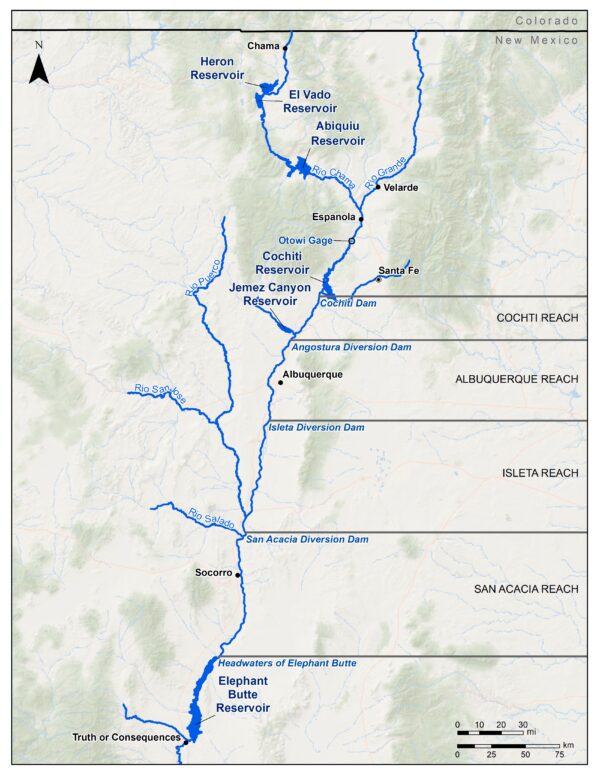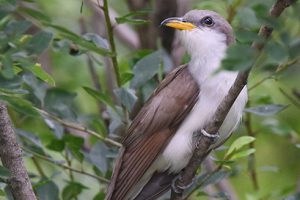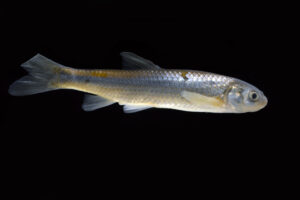About Us
The Middle Rio Grande Endangered Species Collaborative Program (MRGESCP or Collaborative Program) is a collaborative partnership of federal, state, and local governmental entities, Indian Tribes and Pueblos, and non-governmental organizations that aims to protect and recover federally listed species in the Middle Rio Grande (MRG).
Since its beginnings, the Collaborative Program has brought diverse participants together to provide a variety of support for activities that benefit the MRG’s listed species. Over time, the Collaborative Program expanded its species of interest.
The Collaborative Program works to support the recovery of the following five species:
Background

The Collaborative Program has changed gradually over the years, but was first formed in response to several events: the federal listing of the endangered Rio Grande silvery minnow (Hybognathus amarus; RGSM) under the Endangered Species Act (ESA) in 1994, the listing of the endangered southwestern willow flycatcher (Empidonax traillii extimus; SWFL) in 1995, drought in 1996, and litigation related to these events in 1999.
In 2000, stakeholder organizations that were interested in species recovery and protection of water uses in the MRG formed the ESA Working Group. This group led to the development of the MRGESCP, which was officially established in 2002 with the signing of the Memorandum of Understanding. In 2008, Collaborative Program signatories reaffirmed their commitment by signing the Memorandum of Agreement (MOA).
Area of Interest
The geographic area of interest covered by the Collaborative Program follows the Rio Grande, including its tributaries, stretching from the New Mexico/Colorado border downstream to the elevation of the spillway crest of Elephant Butte Reservoir, excluding the land reserved for the full pool of Elephant Butte Reservoir. From north to south, the five reaches delineated within the MRG are as follows:
- Northern Reach (from the Colorado-New Mexico border to Cochiti Dam)
- Cochiti Reach (from Cochiti Dam to Angostura Diversion Dam)
- Angostura (or Albuquerque) Reach (from Angostura Diversion Dam to Isleta Diversion Dam)
- Isleta Reach (from Isleta Diversion Dam to San Acacia Diversion Dam)
- San Acacia Reach (from San Acacia Diversion Dam to the elevation of the spillway crest of Elephant Butte Reservoir)
Governance
The Collaborative Program By-Laws describe the governance structure, decision-making processes, and the roles and responsibilities of the signatories. The by-laws have been amended over the years, and continue to be updated to accommodate Collaborative Program development.
Mission
The Middle Rio Grande Endangered Species Collaborative Program provides a collaborative forum to support scientific analysis and implementation of adaptive management to the benefit and recovery of the listed species pursuant to the Endangered Species Act within the Program Area, and to protect existing and future water uses while complying with applicable state, federal, and tribal laws, rules, and regulations.





